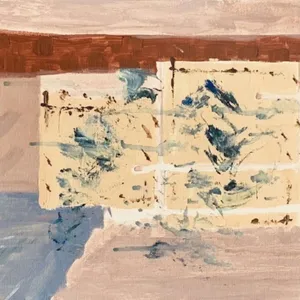Lucy Stone

Lucy Stone is sometimes written about as the person who should be mentioned alongside Elizabeth Cady Stanton, Lucretia Mott, and Susan B. Anthony. She lived an incredibly unique life for a woman of her time and station.
Research:
- Michals, Debra “Lucy Stone.” National Women’s History Museum. 2017. www.womenshistory.org/education-resources/biographies/lucy-stone
- Million, Joelle. “Woman’s Voice, Woman's Place: Lucy Stone and the Birth of the Woman's Rights Movement.” Praeger. 2003.
- Kerr, Andrea Moore. “Lucy Stone: Speaking Out for Equality.” Rutgers University Press. 1992. Accessed online: https://archive.org/details/isbn_9780813518602/page/n323/mode/2up
- Blackwell, Henry B. “What the South can do. How the Southern states can make themselves masters of the situation. To the legislatures of the Southern states.” New York. Robert J. Johnston, printer. January 15, 1867. Library of Congress: https://tile.loc.gov/storage-services/service/rbc/rbpe/rbpe12/rbpe127/12701100/12701100.pdf
- Tucker, Neely. “Stone/Blackwell Marriage: To Love And Honor, But Not ‘Obey.’” Library of Congress Blog. May 5, 2020. https://blogs.loc.gov/loc/2020/05/stone-blackwell-marriage-to-love-and-honor-but-not-obey/
- com Editors. “Lucy Stone.” Biography. Com. Nov. 23, 2021. https://www.biography.com/activists/lucy-stone
- Smith, Bonnie Hurd. “Lucy Stone.” Boston Women’s Heritage Trail. https://bwht.org/lucy-stone/
- “Lucy Stone.” National Women’s Hall of Fame. https://www.womenofthehall.org/inductee/lucy-stone/
- “Garrisonians.” Vermont Christian Messenger. Jan. 30, 1850. https://www.newspapers.com/image/490750662/?terms=%22Lucy%20Stone%22&match=1
- Hays, Elinor. “Morning Star.” New York. Harcourt, Brace & World. 1961. Accessed online: https://archive.org/details/morningstar00hays/page/n7/mode/2up
- Lang, Allison. “The 14th and 15th Amendments.” National Women’s History Museum. Fall 2015. https://www.crusadeforthevote.org/14-15-amendments/
- Britannica, The Editors of Encyclopaedia. "Lucy Stone". Encyclopedia Britannica, 14 Oct. 2022, https://www.britannica.com/biography/Lucy-Stone
- Wheeler, Marjoeiw Spruill. “New Women of the New South: The Leaders of the Woman Suffrage Movement in the Southern States.” Oxford University Press. 1993.
- McMillen, Sally Gregory. “Lucy Stone: An Unapologetic Life.” Oxford University Press. 2015.
- “Love and Protest in a Marriage.” Library of Congress. https://www.loc.gov/exhibitions/women-fight-for-the-vote/about-this-exhibition/seneca-falls-and-building-a-movement-1776-1890/family-friends-and-the-personal-side-of-the-movement/love-and-protest-in-a-suffrage-marriage/
See omnystudio.com/listener for privacy information.









